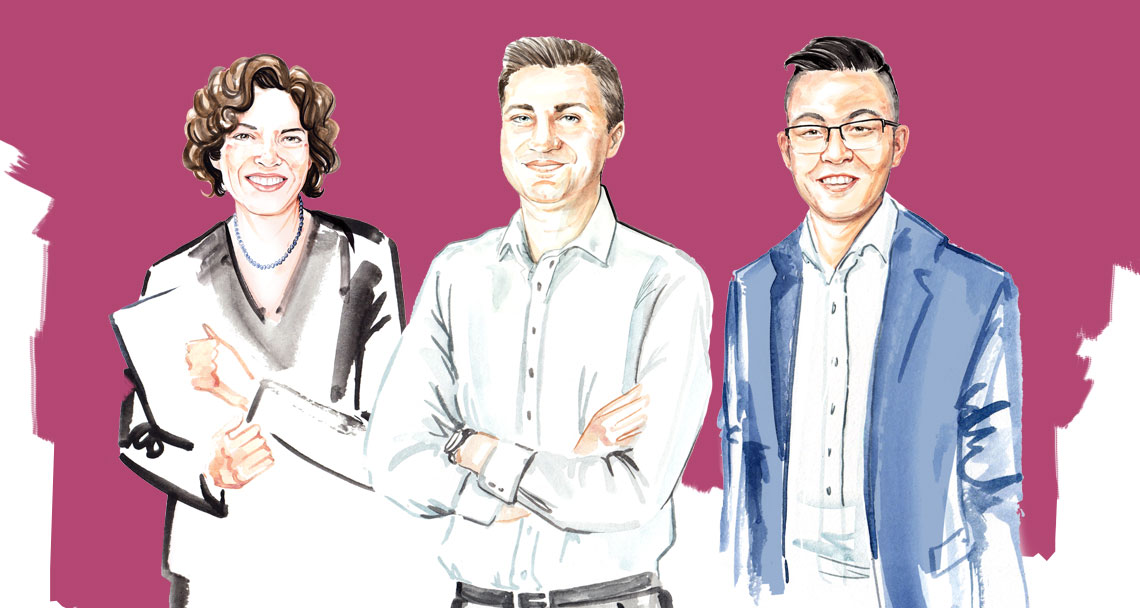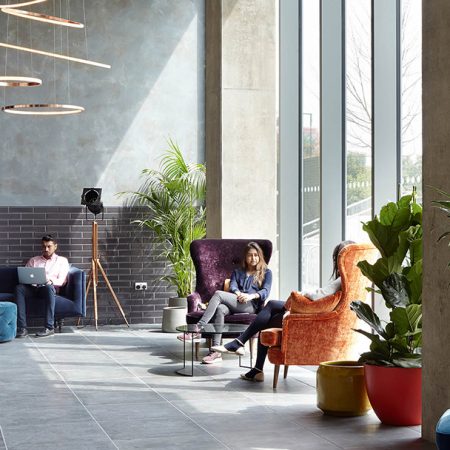Technology in our homes
Melissa Marsh Senior Managing Director, Occupant Experience, Savills Studley
Technology is becoming a bigger part of our personal lives and spaces every day. An urbanite’s typical evening might entail catching a lift home with a ridesharing app; searching for a restaurant and making a reservation online; rating the experience on a user review site; dimming the lounge lights from a smartphone, and settling in for a film recommended by an algorithm.
People have seen how easy technology has made these tasks in their personal lives, and now they want to manage their work environments with the same convenience. They want to register guests electronically, order their lunch in two clicks, select a meeting venue through an online search, then submit their two cents about how it all went. This shift is driving employers (and soon landlords) to offer the same technological amenities in their spaces that many have come to rely on at home.
Architects may be familiar with Stewart Brand’s 1994 book How Buildings Learn: What Happens After They’re Built, which details the concept that buildings have six layers: site, structure, skin, services, space plan, and stuff. Now, as we enter the age of social data-driven design, we see a seventh layer – user-enabled digital experience – that’s elevating the level of occupant choice and control to new heights and allowing buildings to serve their users better.
This is good news for occupants, of course, and also for building operators who keep abreast, as they’ll be able to attract and retain great customers and renters. But employers and landlords who don’t adapt will be left behind. Whether it’s occupancy sensors that automatically shut off the lights after the last employee leaves, a smart coffee maker that remembers how you like your brew, or restaurant reviews that indicate those uncomfortable chairs have got to go, a building’s users, designers and managers have access to an unprecedented amount of information about occupant satisfaction and space functionality. And the volume of thFRIFRIis data will increase as buildings become more attuned to our preferences. It’s up to us to use this new knowledge to our best advantage.
Technology in the workplace
James Friedenthal Head of Corporate Development, Workspace
Businesses are evolving at speed, relying on the latest workplace technology not just to operate and compete, but to cater to employees’ growing expectations of flexible working and connecting on the go.
We have witnessed these trends evolve first hand. Where we had previously provided managed connectivity to 100 offices within a building, now the focus is on thousands of interconnected people and devices.
The ever-increasing demand for greater capacity and resilience means, as landlords, we also need to adapt and futureproof our buildings – whether it’s by creating robust infrastructure, increasing circuit sizes or ensuring wi-fi is accessible throughout every part of the building.
Looking to the future, we are starting to analyse data from our building-wide wi-fi, which will help inform how we manage and design the spaces. For example, if we know people are congregating in a certain area, we might think about putting in more meeting tables, seating or breakout spaces.
Technology that connects communities
Anthony Liu New Ventures Lead, Blueprint, at Hong Kong landlord Swire Properties
Real estate is a traditional industry, but our customers’ habits, demands and behaviours are changing more quickly than ever before. These days, customers want immediate access to all types of product information, whether that product is a retail stock-keeping unit, an office space, apartment or hotel room. They want interactive and experiential journeys, too. More commonly experienced in the hotel and retail sectors, this is becoming a major trend even for workspaces and residences. Customers want, and expect, direct, immediate communication with product and service providers via social media and other channels.
At Blueprint, our co-working and innovation hub, we exclusively connect our members with service providers in Swire Properties’ tenant network, such as auditors, accountants and law firms. A formal referral channel for co-working teams ‘graduating’ to traditional office space within the Swire portfolio is also being planned. Our community managers are required to personally know every single member company, and actively facilitate business and social connections to create a warm and supportive community.
Furthermore, monthly professional talks and networking and wellness events are held to bind the community together, while the abundance of common areas – for example a terrace, a café and lounges – encourage socialising and unplanned connections, which all help to improve productivity. By creating a community with purpose, we’ve found that members are happy to work longer hours if necessary, and staff are more easily recruited and retained.




